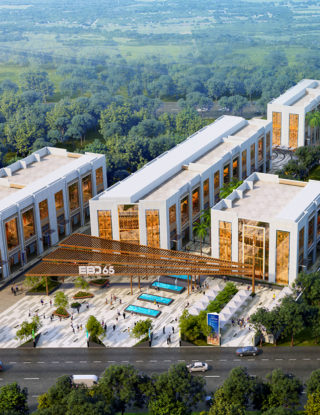The quandary of the Indian economy is a much-debated topic in international circles, with astute dialectic about its historiography and unique trajectory to success. However, one thing that is accepted as a universally equivocal fact is that the country today is one of the global dominating forces with a colossal impact on the transcontinental market dynamics.
The role of the country’s real estate sector, which is projected to contribute to 13% of its GDP by 2030, cannot be emphasized enough. The sector which is the 2nd largest employer of the workforce in the country, is today however undergoing unprecedented structural change. While it is true that earlier approximately 80% of investment in real estate ensued in the cities of Bangalore, Mumbai, and Delhi-NCR, the investment landscape is rapidly evolving to expand to newer horizons of Tier 2 cities.
Let us briefly discuss the factors fortifying the emergence of Tier 2 cities as a discerning investment horizon.
The Multipronged Effect of the Pandemic:
While admittedly multiple underpinnings are driving this movement, we cannot ignore the huge impact the pandemic has had on the investment topography in the country. With the pandemic, an imminent realization of the utter saturation present in the metropolitan, Tier 1 cities of the country and its inherent frailty as well as debility to support the perpetually intensifying demand came to the forefront.
The Tier 1 cities in India today are inundated with exorbitantly priced residential and commercial assets, in addition to weathering the burden of the high cost of living and in an atmosphere plagued with pollution and all the ills the latter usually accompanies. In face of a daunting ecosystem, and with an informed cognition of the importance of wellness, mental and physical, the country is experiencing an interesting phenomenon of ‘reverse migration’ amongst the talent.
The workforce today is therefore moving to Tier 2 cities in search of better living experiences with expansive living spaces available at a relatively lower cost. Add to this, the burgeoning core infrastructure and facilities available in these locales have made them the ideal residential destinations.
Thriving Commercial Catchments:
The trend of reverse migration has not gone unnoticed by the corporate world in the country. Much like homebuyers, small business owners and multinational corporations alike are cognizant of the changing work ethos and requirements of the modern workforce. The need to not only instill but to make the employee wellness quotient the crux of their organisational design has led to many renowned corporations shifting bases to Tier 2 cities.
Here, they can acquire or lease open spaces wherein they can easily inculcate wellness and hygiene requirements as well as provide access to an array of amenities. In addition to this, the fact that the cost of conducting business per sq. ft in these locis is much lower is another attractive factor, especially in the contemporary global scenario of recession.
Government Initiatives and a Resultant Bolstered Infrastructure:
The genesis of Tier 2 cities as a flourishing investment framework is uniquely tied to a series of initiatives rolled out by the central and state governments to bolster the core infrastructure in these formerly glossed-over locales. The Indian government has over the decades worked tirelessly to transform the landscape of these cities by launching programmes such as the Smart Cities Mission.
We are witnessing an increasing number of states incentivizing manufacturing in their key Tier 2 cities, as a part of the ‘Make in India’ programme. Campaigns such as Digital India and Startup India have resulted in Tier 2 and Tier 3 cities being responsible for over 50% of recognized startups in the country!
One key instance of the government labouring to establish a conducive investment ecosystem in Tier 2 cities is apparent in the Union Budget for 2023-24. The Finance Minister has stated the government’s intention of creating an Urban Infrastructure Development Fund, to be managed by the National Housing Bank which can be used by various public agencies to develop urban infrastructure across Tier 2 and Tier 3 cities.
With improved infrastructural support, top-class transit mechanism, and strategic arterial connectivity to major commercial and industrial hubs, Tier 2 cities are witnessing a pioneering emergence of IT/ITes hubs and industrial corridors in these previously untapped locales.
Emaar’s Presence in Tier 2 Cities:
One of the global key players in the real estate sector, Emaar has successfully established a legendary portfolio of built environments in varying segments, from residential to retail and commercial. Carrying the responsibility of a prodigious reputation, Emaar India has been working to elevate living and work spaces in the country.
The real estate tycoon’s presence has especially been felt in Tier 2 cities like Mohali, Jaipur, and Gurugram. In Gurugram, for instance, with their Emaar Business District complexes, the realty has ramped up commercial and retail presence in the formerly sidelined zones in the region. The realty has a penchant for selecting locations that are primed to boom, with the presence of a vast avenue of facilities, progressive social infrastructure, and impressive transit mechanisms.
Whether you are a homebuyer, looking to buy a luxurious home, an investor wanting to diversify his asset portfolio, or a business owner searching for the right home for your company, at Emaar India all your needs are catered to. When you partner with Emaar India, you are sure to find the best, built asset sure to yield great returns on your investment.


